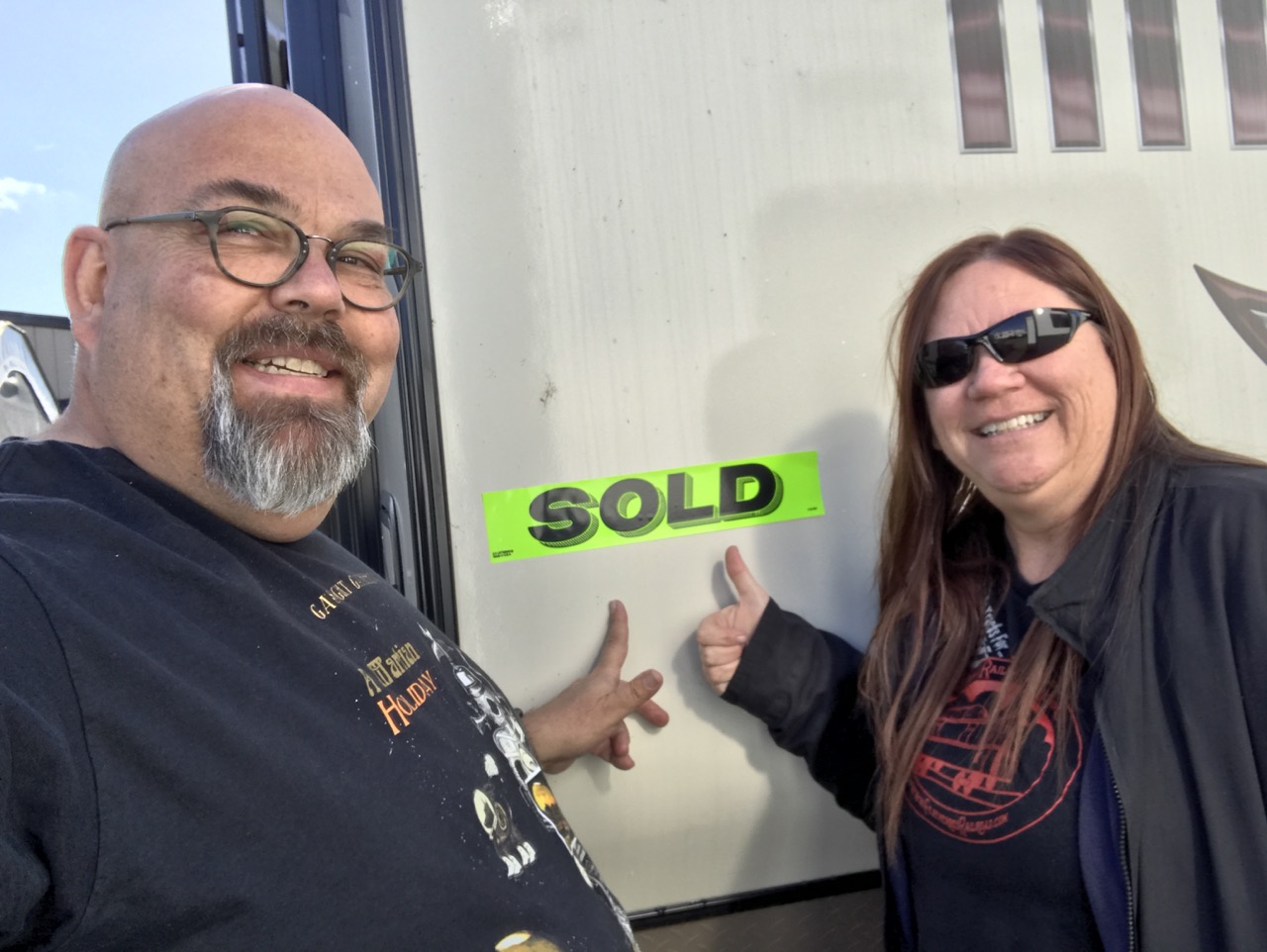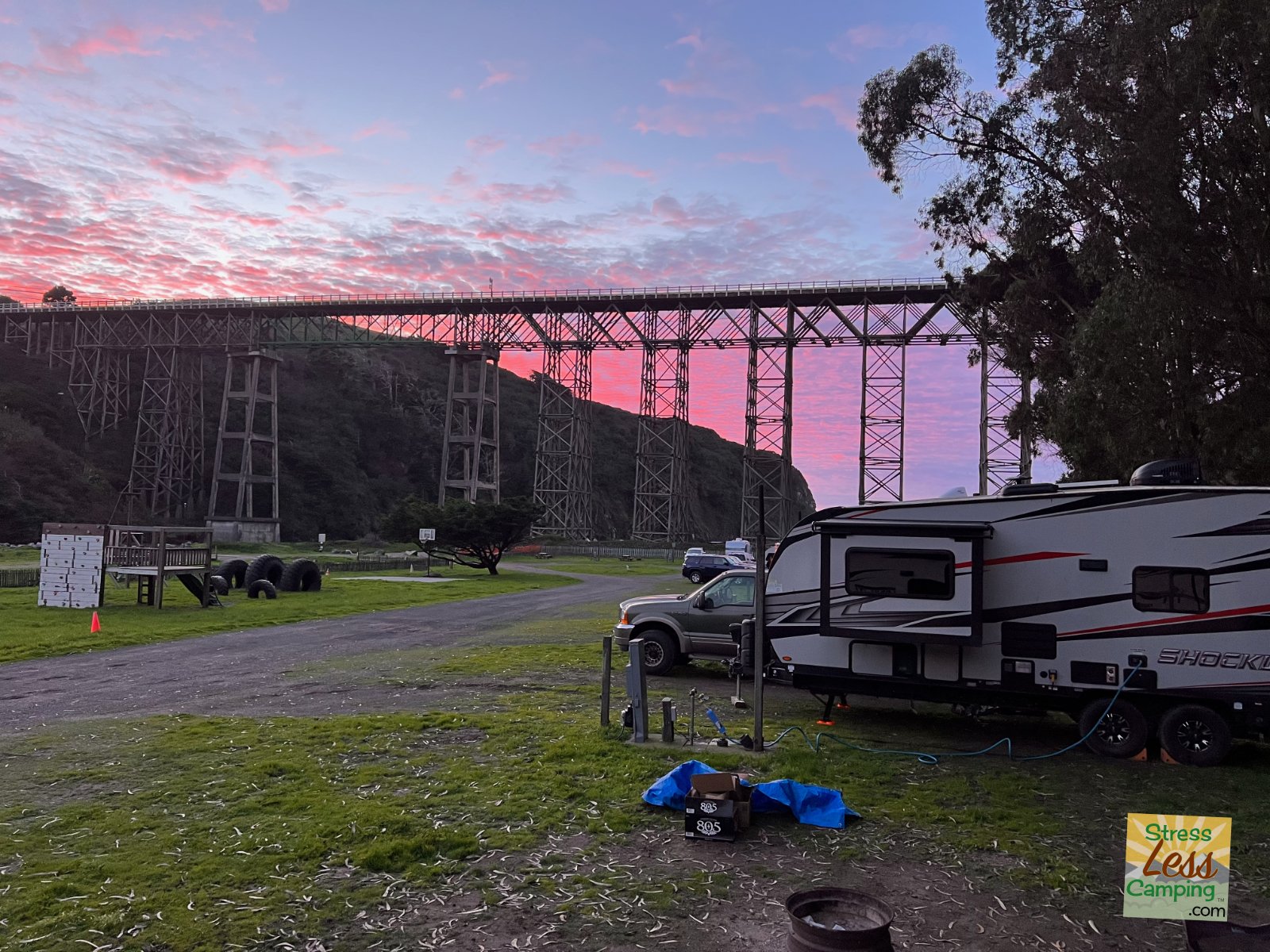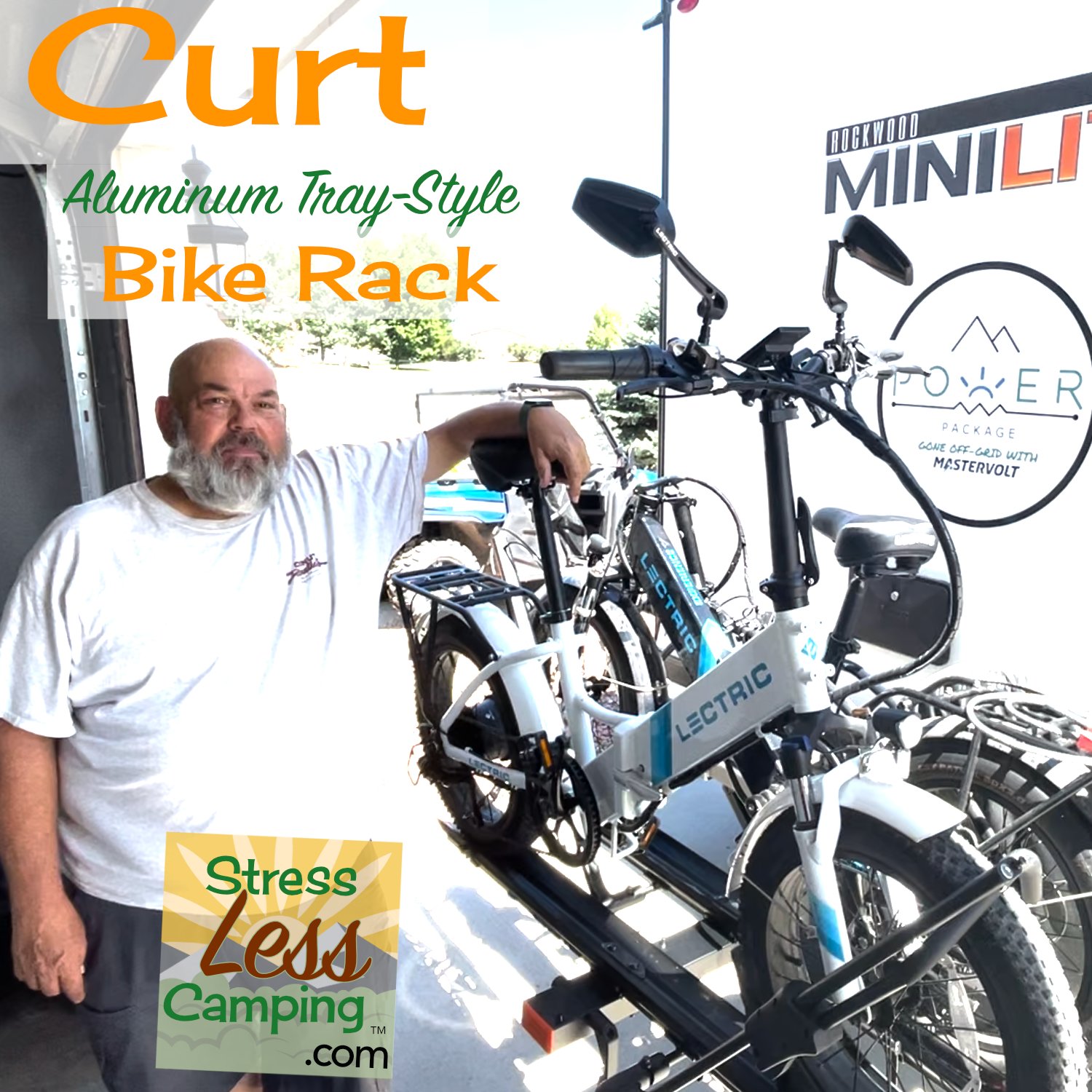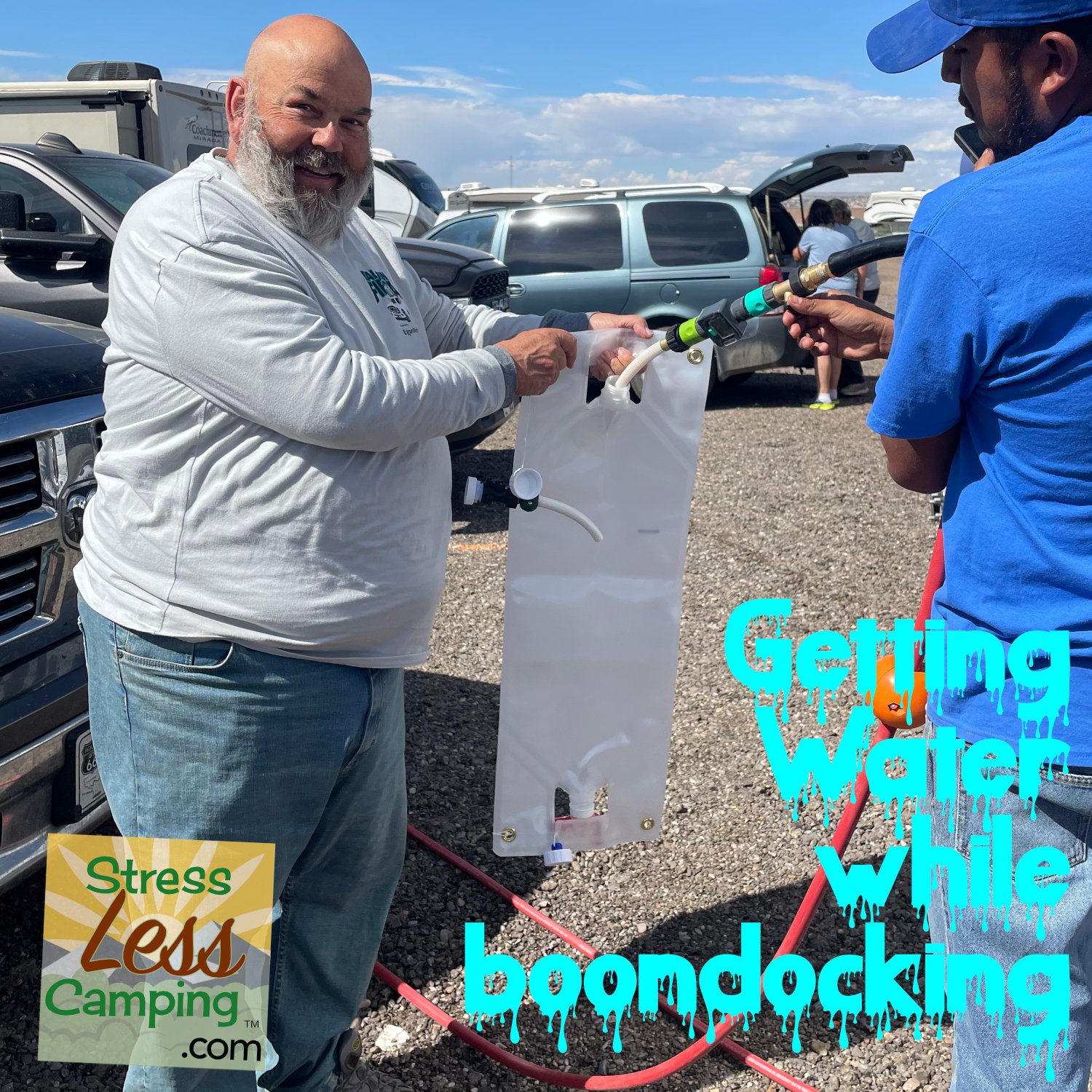Four days boondocking in an RV during winter - how does RV lithium and solar work?
Four days boondocking in winter - an RV solar saga
Can a solar and lithium RV battery system support off-grid camping in the winter? This was something we were going to test by spending four days and three nights off the grid in December. Can our RV provide enough power reserves to be able to handle four days off the grid? Here’s the answer.
The five solar panels on the roof of our Rockwood Mini Lite 2205s with the Power Package
The RV
The RV for this test is our own Rockwood Mini Lite 2205s equipped with the Power Package. The Power Package is a combination of 1,000 watts of solar and a 400 amp-hour lithium battery. There’s also a 3,000 watt CombiMaster inverter and all the associated components to make this into a functional system.
But ours wasn’t the only RV testing the limits. We spent these four days and three nights camping adjacent to Michael Bracewell whose The Travel Trailer Guy videos provide detailed step-by-step guidelines for all sort of issues with RVs.
Michael’s system consists of 800 watts of solar and 400 amp hours of lithium batteries in a system he devised and built himself. The two systems performed very similarly.
The highest demands in our RV were the 12 volt Dometic refrigerator and the furnace. The fridge might be self-explanatory and I’ve calculated that this fridge consumes about 80 amp hours over a 24 hour period of time in winter. It’s more power hungry in summer so the cooler air temperatures is something we had going for us.
The furnace’s power consumption comes from the blower fan. We have an article about the power consumption rates of RV appliances and the furnace’s fan is surprisingly power hungry.
Other than that it was mostly lights and the water pump when it was operating. Because the winter storm had actually warmed the air a bit we never had to turn on the tank heaters during this off-grid adventure.
Our friend Michael Bracewell captured this image of the tremendous waves off the coast of California thanks to a strong storm on the Pacific Ocean.
The weather
While we could have hoped for better, we were camped at Doran State Park on the Pacific Ocean in California. This has been a park that we’ve camped at numerous times including on our second outing in our first new trailer. It has become a favorite for a variety of reasons.
The sites here have no hook-ups whatsoever and the natural foliage of twisted and gnarled trees can block the sun at some sites. There are sites within the system that have more tree coverage than others. There were trees over out site but I was able to park my camper in a southeasterly-facing site and where all the solar panels were not under trees.
However we were here during a pretty significant storm such that the waves were causing damage up and down the California coast and the skies above were mostly gray with a good amount of rain mixed in for good measure. In other words, if you wanted to test a power system, this would be a good test.
Day one
On arrival we had full batteries having come from Albion Beach Campground. We arrived mid-afternoon and spent some time catching up with Michael.
By the time we went to bed we ran the furnace for a while and did some reading and then went to sleep with about 80% of our power reserves remaining. I was a bit concerned only because that seemed to be a lot of power used in only a few hours and we had several days left.
Fortunately Michael did bring his generator as a back-up which was reassuring although I really didn’t want to have to tap into a generator. But it was nice to know that it was there.
Day two
I was surprised at how little power we used overnight with the first full day staring off at 76% state of charge. However Mother Nature had no sun planned for us whatsoever which was a bummer.
After showers and such we spent some time swapping stories with Michael as it had been a few years since we camped together. Inevitably the talk turned to RVs and some of the adventures we’ve had since we last saw each other in the real world.
By the time this day came to a close we actually were still around 76% state of charge and I was rather convinced that we’d be fine. The way we got to keep our power level fairly consistent is that, even though there wasn’t a lot of sun, it was enough to counter any use we had so the sun zeroed out our consumption and add just a tiny bit to our reserves.
My typical use would have consumed more power but also, even with minimal sun, I would have been back to a full state of charge by sundown.
Day Three
Today at the end of day three we are ending the day at about 57% state of charge. Tomorrow we head further north but to Clearlake Camp Ground where full power hook-ups await.
Today was a particularly awful day weather-wise with torrential rains at times and very little sun. At this time of year the sun is much lower on the horizon so it doesn’t produce much even on what would be considered a sunny day.
When I was here I could see that we were getting about 2-5 amps of power from the solar panels so there was some input, obviously. But, still, not a lot.
The next morning as we were packing up our trailer to leave, our power reserves were still at 37% which means we could have stayed another day. We had about the equivalent of a single 100 amp hour lithium battery left which is what a lot of RVers start with, so we were still good.
Of course as we were packing up the sun was doing its best to lift our spirits as well as our state of charge but, despite it’s beckoning, we were headed out. Fine, tempt me with a glorious day of winter sun why don’t you?
How we saved power
One of the ways we were able to go through this experience is by saving power. Our trailer, like most new trailers, is illuminated by LED lighting. So lighting is very efficient.
We didn’t really conserve much in terms of using the furnace and the fridge is set on it’s normal setting so it was not in Eco mode. It does have this feature but doesn’t run as cold so we tend not to use it.
In our trailer we did not turn on the inverter so that means no microwave and no household power. I did bring our uGreen Portable Power Station in case we wanted to fire-up the Starlink system but the cell signal was good enough that I never did even take it out of its box.
Michael had very similar performance results in his trailer with his battery and solar system so I guess that confirms my findings. However he wasn’t as efficient in his power use and did have his inverter running the entire time. Further, he uses household power to make coffee in the morning.
Conclusions
So, the bottom line? I am more impressed than ever with this power system from ABC Upfitters. Of course everyone’s experience is going to vary based on so many factors, but these systems continue to prove to be robust and able to serve us.
With people asking how these systems perform in less-than-ideal conditions my answer is that they have exceeded my expectations.









